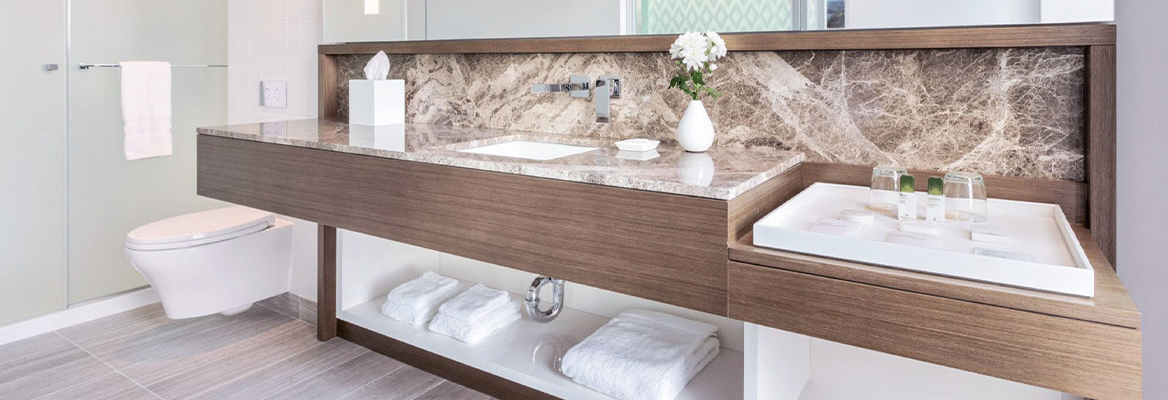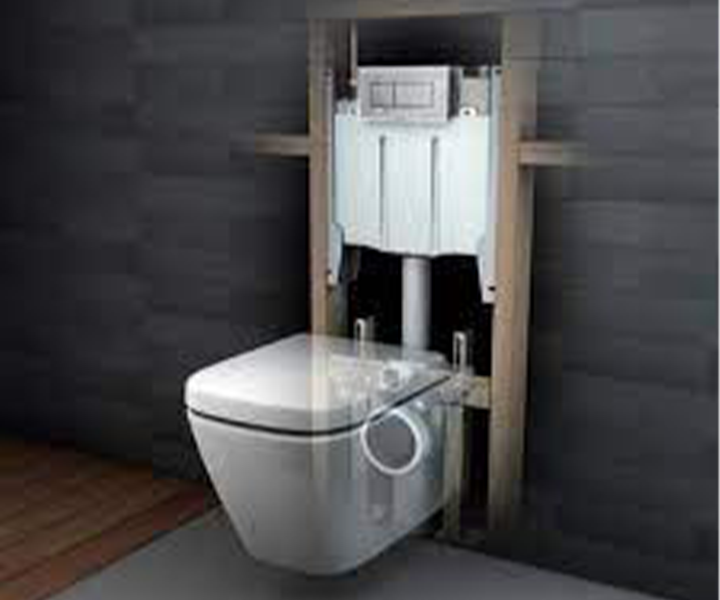- Resources
- Insider Tips
- What you need to know about in-wall toilets.
What you need to know about in-wall toilets.

...an in-wall toilet...literally means that the tank of the toilet 'lives' inside the wall, hidden from view.
Many years ago, I was first introduced to in-wall toilets. To be completely honest, I didn’t initially get it. They were introduced by an Australian who had no knowledge or understanding of North American One Piece toilets; (they don't sell them in Australia - high end means in-wall). I asked him why. What was the big deal? I’ve learned a lot since then and I guarantee, if I build or significantly renovate, I would always choose in-wall toilets. Let me explain why.
First, what is an in-wall toilet? It literally means that the tank of the toilet 'lives' inside the wall, hidden from view. What shows is the toilet bowl and the flush actuator button kit – that’s it.

So, why should anyone want this, because – full disclosure- there are a couple of negatives! First, they are more expensive than a standard toilet, both in terms of purchase price and installation, as installing them is more complicated and takes longer than a standard floor mounted toilet. Also, you need to decide on an in wall toilet while the plumbing is being installed as it goes behind the walls. It is much more difficult to add an in-wall toilet while renovating, unless you are taking your bathroom right down to the studs and starting from scratch.
Ok – that’s the bad news. So, what could make it worth the extra cost? Let’s go through it, point by point
EASY CLEANING The bowl mounted to the metal bracket behind the wall and so is suspended, meaning it doesn't connect to the floor; so, no sewer connection cutting into your tile or marble and no caulking to maintain . The tank is hidden behind the wall so cleaning means simply wiping off the outside and using a mild cleanser inside and outside the bowl. You can fit a vacuum, broom or mop underneath the bowl quite easily! No more awkwardly reaching around the back end of the toilet trying to keep the back wall, floor and back of the bowl clean. Anyone who performs this weekly task will instantly appreciate a bowl that is lifted off the floor, making efficient, effective, deep cleaning so much faster and easier!

SPACE – Because the tank is tucked inside the wall, an in-wall toilet takes up less space in your bathroom. This diagram shows an in-wall toilet display with a mark showing the space required by a standard floor mounted toilet compared to an in-wall bowl. You'd be surprised just how much of a difference those extra inches make to the roominess of a bathroom; especially a very small bathroom. Every inch counts.

Besides the actual physical space saved, it’s amazing how having the bowl lifted off the floor also gives the illusion of much more space in a room! With light able to be seen under the bowl, the space appears larger, less crowded and brighter, with no extra square footage required.
NOISE REDUCTION – When you mount a toilet tank inside a wall, there is a natural noise reduction bonus, so when the tank refills after flushing, it tends to be a bit quieter than a floor mounted toilet, and much, much quieter than a pressure assist toilet.
FLEXIBLITY – With floor mounted toilets you are limited to standard or ADA heights, while generally with in-wall toilets there is more flexibility as the bowl is attached to a steel carrier that sits inside the wall and you can mount the bowl at a variety of heights. So, whether occupants are 4’ 10” or 7’ tall, you can make the bowl height work for you. (Remember though, once the bowl height is set, you can only change it by breaking open the wall, so choose the height carefully.)
ADA – For individuals with disabilities in-wall toilets can be customized to the perfect height, and can feature raised button kits to make flushing easy, even with limited use of hands or finger. There are even button options featuring braille.
Maintenance: This is obviously a concern as it is simply easier to access a tank in front of the wall. But, there are two solutions. First, most manufacturers use a button kit with an access panel, giving room for full servicing through the that space when the button kit is removed. It is a bit tight, but once you’ve done it once, you realize it is very possible. Have a look at how this in-wall toilet is designed perfectly for access to the internal components.
Second, if you want greater access, you can always have the back face an unused space, closet or other area where you can utilize a large access panel for full visualization. and servicing.
Plumbing professionals experienced in in-wall installation are brilliant at both installing and servicing these units. A word of caution though; choose a professional who does have experience. You don’t want them learning how to install while you are paying an hourly fee. Also, some of the important instructions are easy to miss for a DIY or ‘jack of all trades’ person. For example, it is extremely important to vent in-wall toilets properly. This is one of the top installation errors related to poor flushing efficiency. Manufacturers of in-wall toilets find that a lot of the service calls they receive are due to improper installation, rather than actual product issues, so make sure to have a professional that you trust install.
All of the features above make in-wall toilets very popular for hotels and commercial venues, where cleaning staff maintains fixtures daily. The extra costs are more than made up for with the reduced time it takes to clean and the extra space created in the often small hotel bathrooms. They are also popular with the design community as we are all looking for any tricks of the trade to make a room look more spacious. It's true that in-wall toilets aren't for everyone, but they are a fantastic option to consider.

